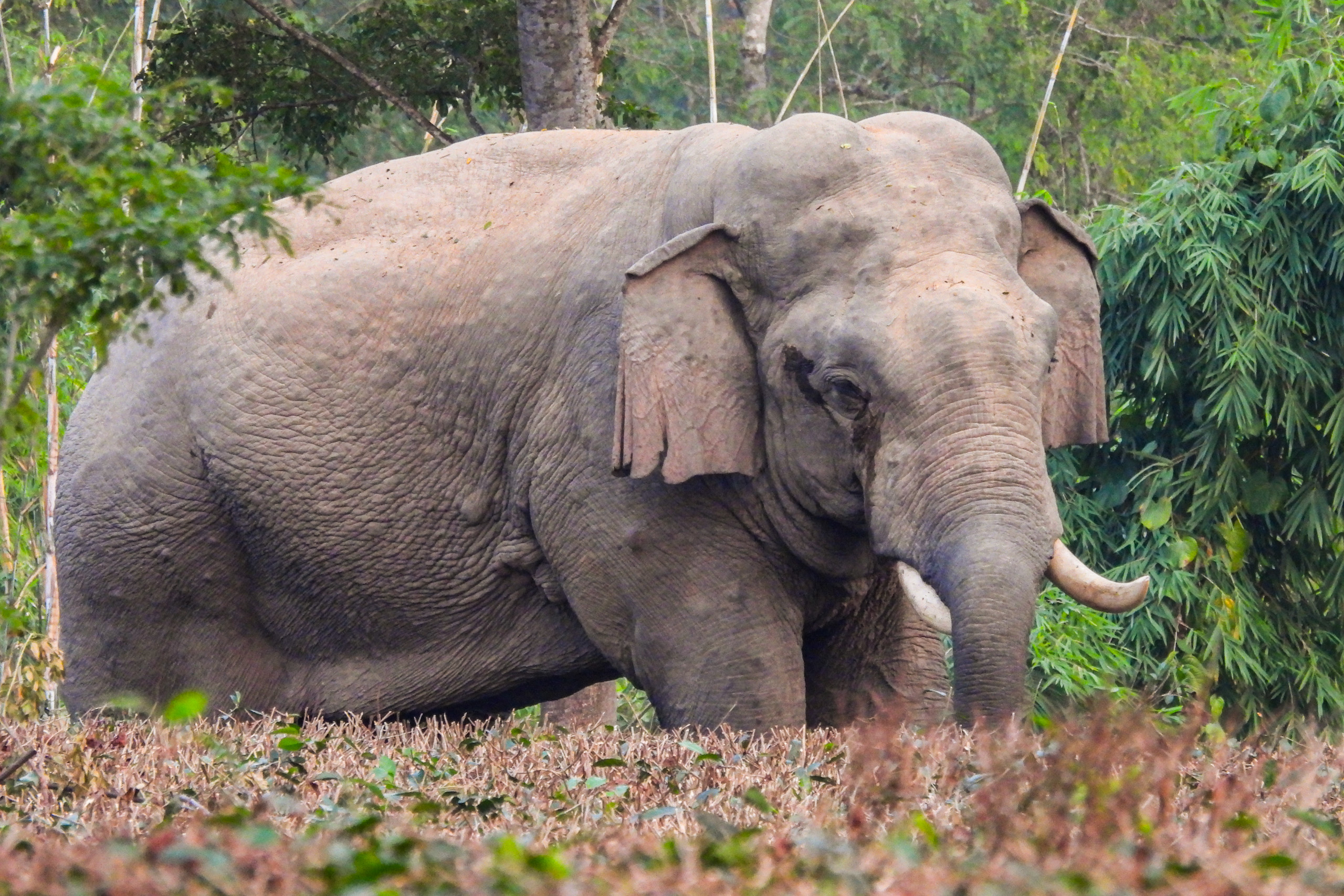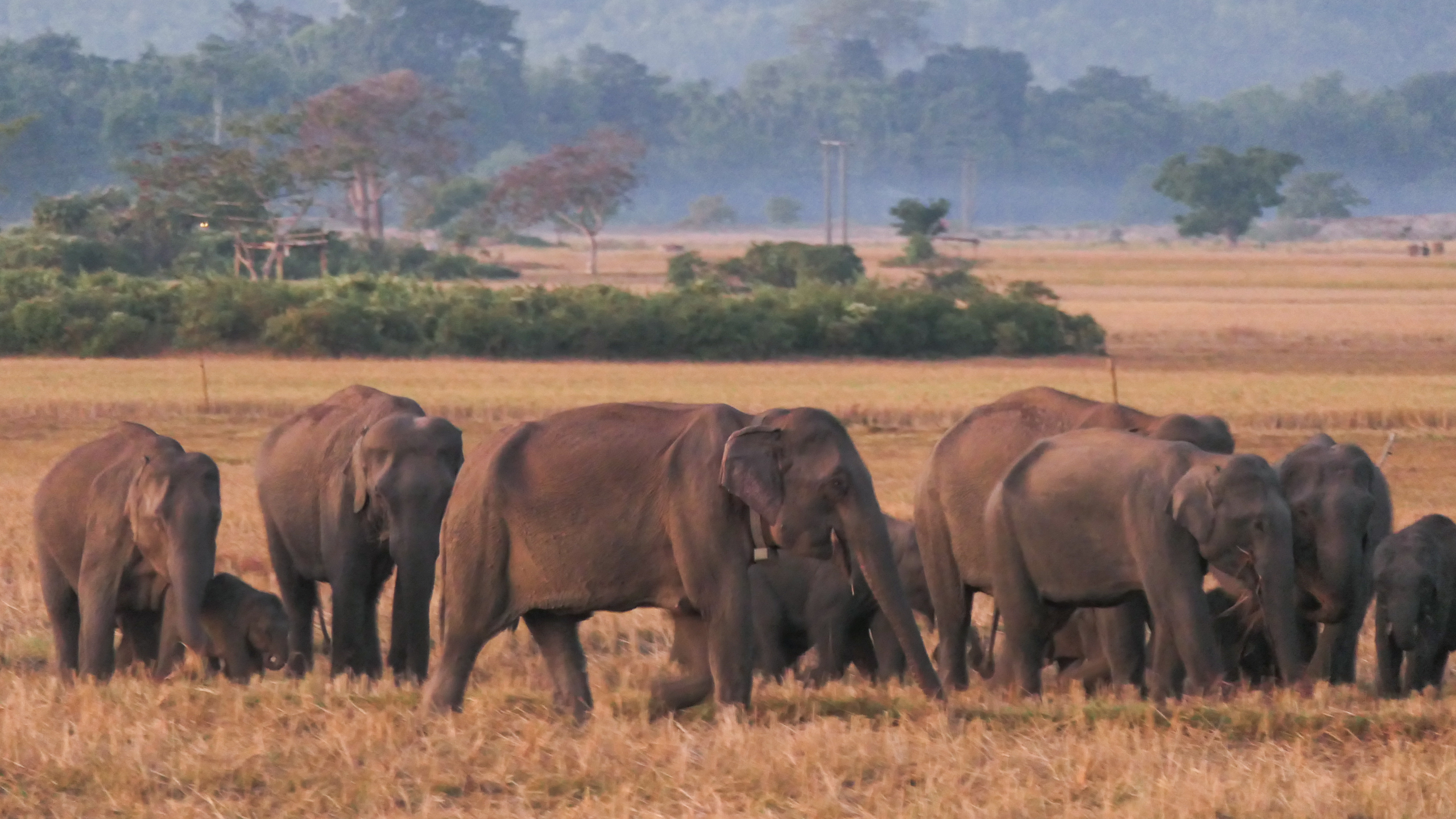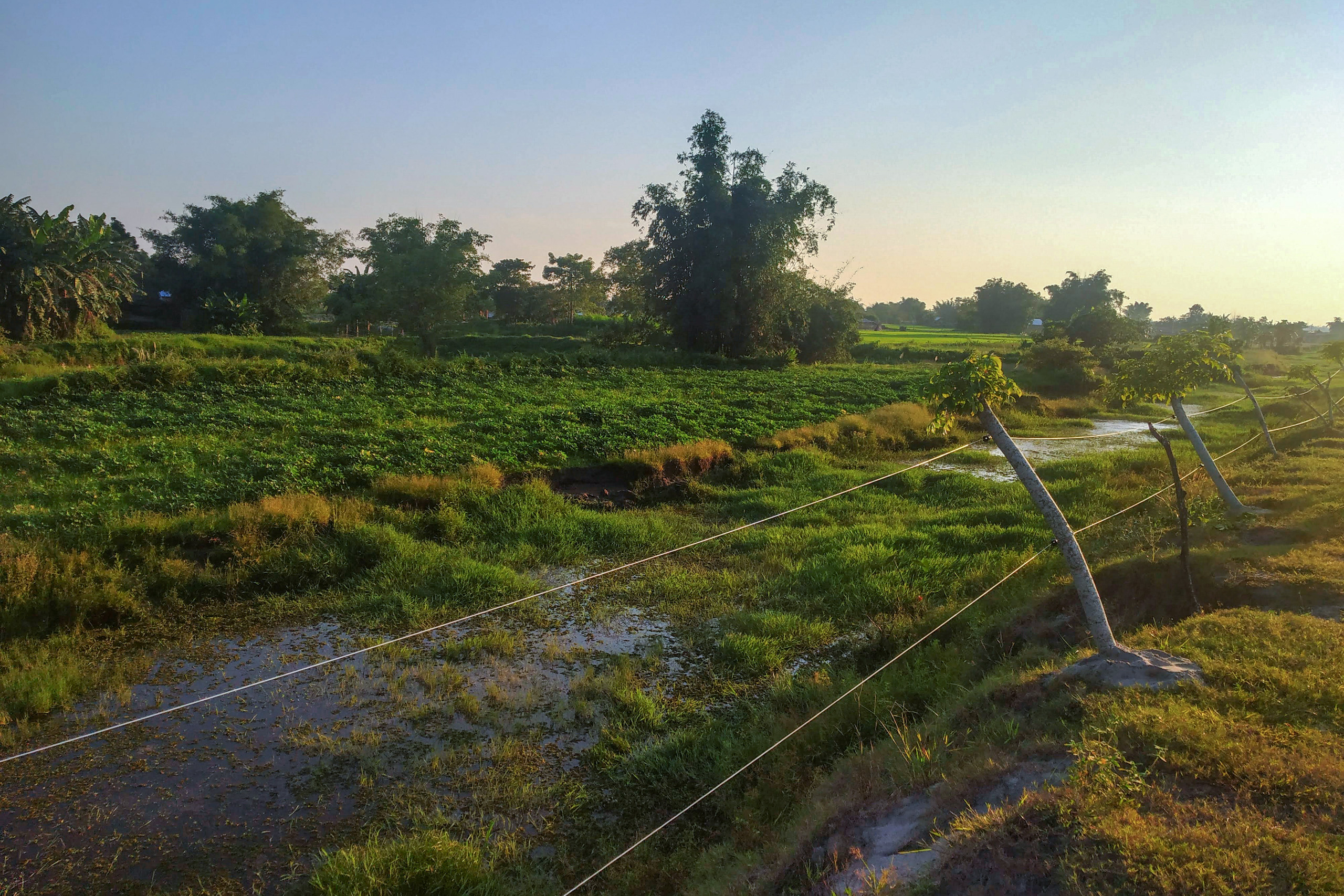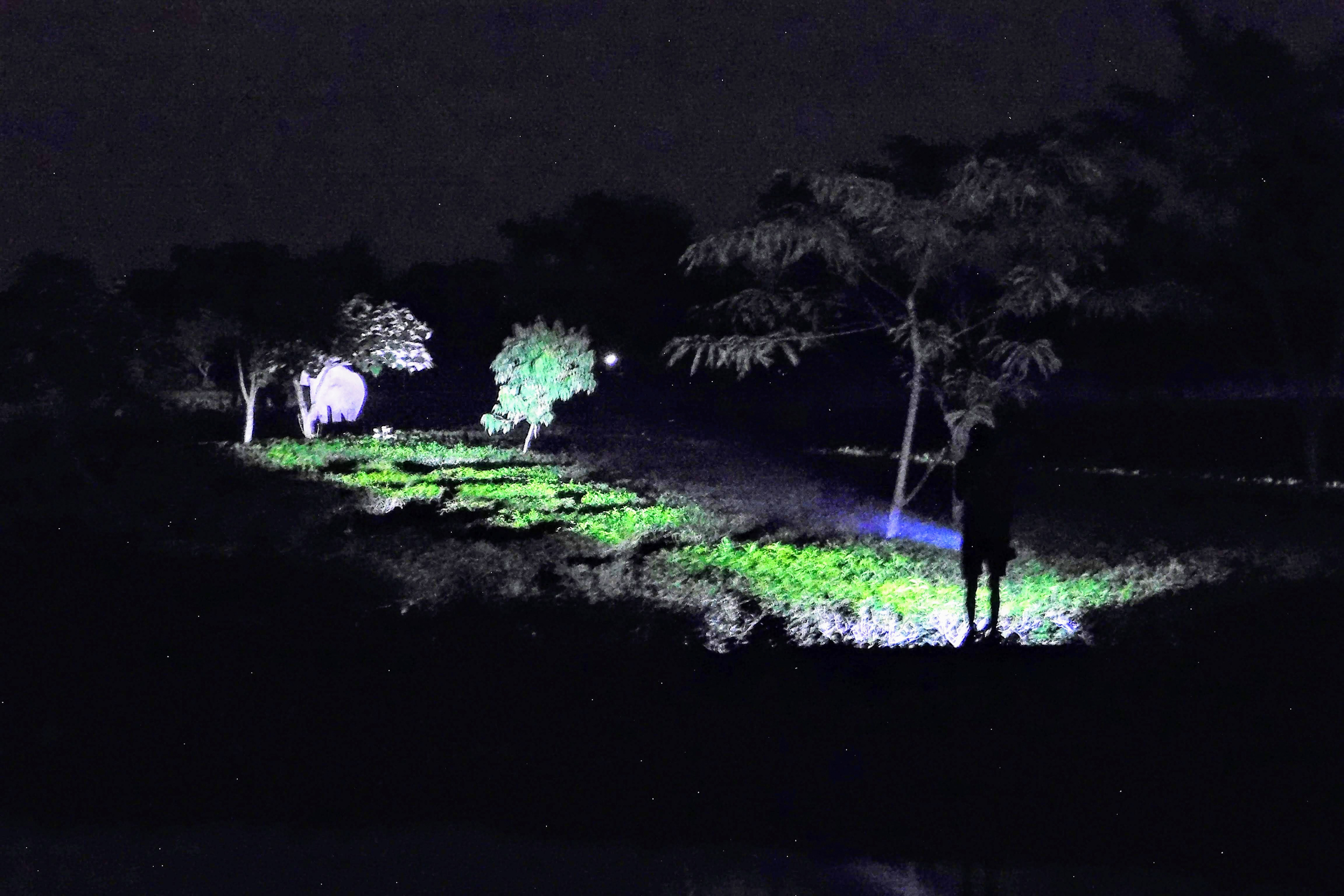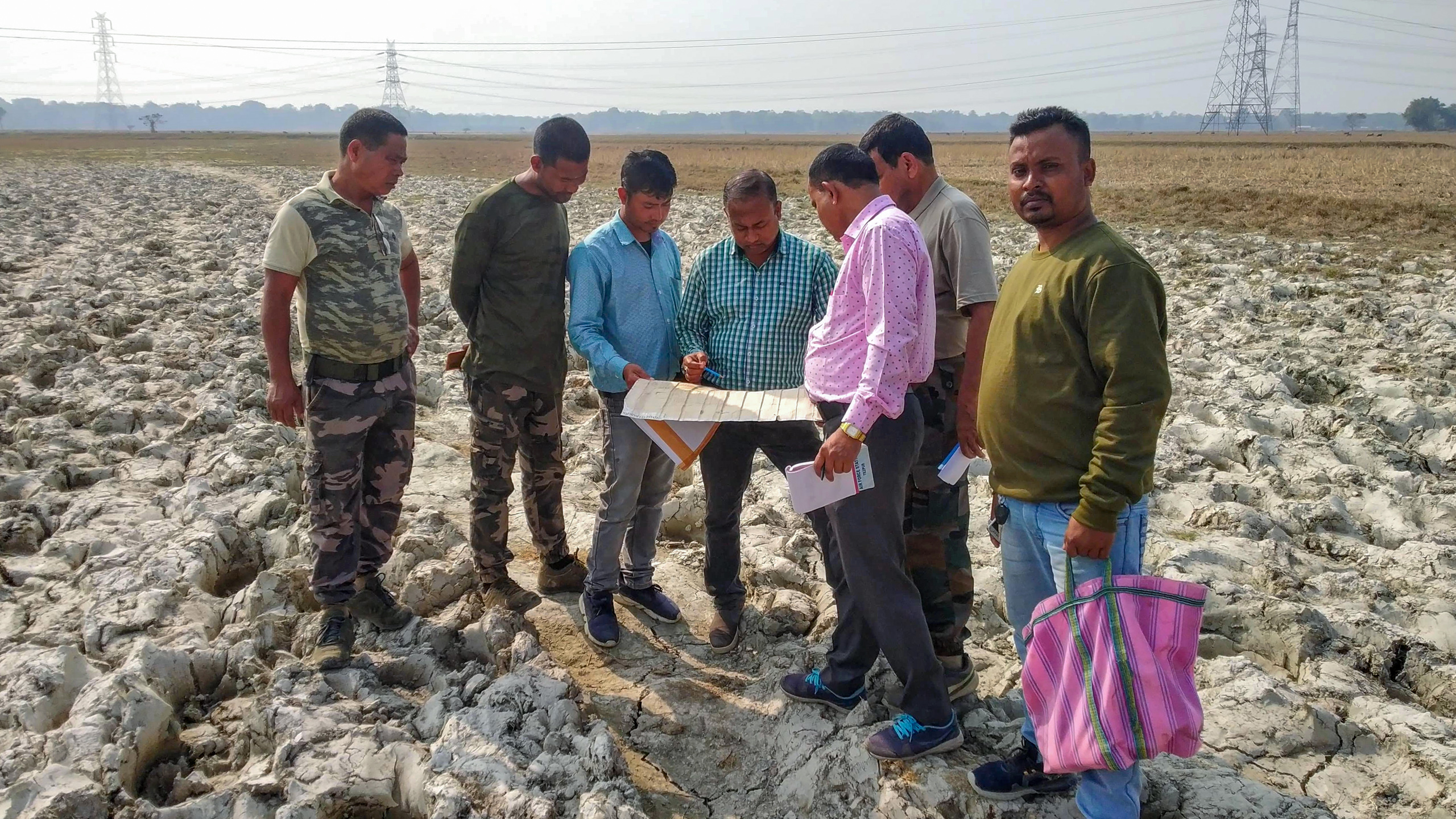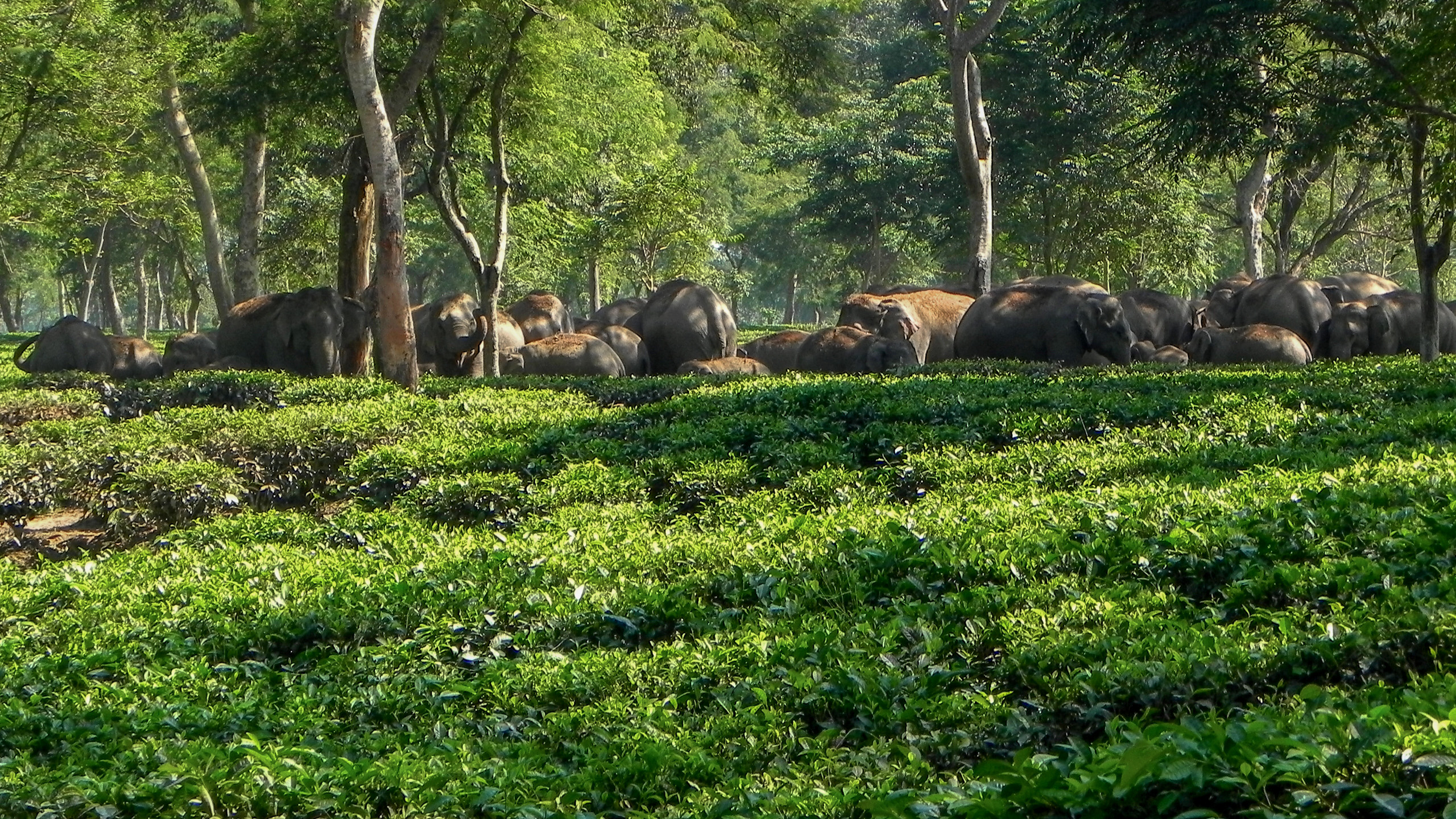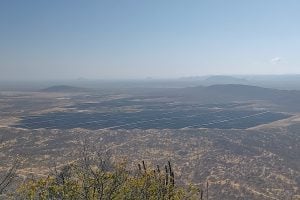Tara, a young elephant in Assam’s central-northern Sonitpur district, spends most of her time in the forests of the Sonai Rupai Wildlife Sanctuary. This ancient elephant habitat, nestled along the foothills of the Himalayas, boasts a lush landscape of both evergreen and deciduous forests, and riverine grasslands.
For much of the year, Tara’s herd remains largely invisible in this dense environment. With abundant food and water, they roam within a modest 30-40 square kilometres, not needing to move more than a few kilometres every day.
However, come October, Tara’s movement patterns change. Following historical migration patterns, her herd leaves the forest, venturing into the district’s many tea plantations and following the path of the Jia Gabharu River, where they are joined by other elephant families. From here, they travel down to the Brahmaputra River, expanding their home range tenfold to encompass farmland and tea plantations. As their daily movements double, their interactions with humans also increase.
Motiram Boro, a farmer in the village of Chariduar in Sonitpur district, is no stranger to these encounters. Elephants once ravaged his paddy fields, leaving the farmer devastated. Boro responded by installing a solar-powered electric fence, a cost-effective barrier that has protected his crops since 2018.
Nearby, forest staff hold an informal ceremony to pray for fewer human-elephant interactions. This period, known locally as hathi (elephant) season, aligns with the ripening of rice in the paddy fields.
Historically, elephants in Assam migrated along river corridors like the Jia Gabharu, moving between forests and feeding on crops from October to December. However, during the past 40 years, forest cover in the districts of Sonitpur and Udalguri has been reduced by encroachment and deforestation, significantly eroding the elephants’ habitat. This pushes them into conflicts with humans.
Anti-depredation squads
In response, local communities and forest officials have organised anti-depredation squads (ADS) to manage human-elephant interactions. They work as informal, voluntary, but well-connected groups of villagers who are on the lookout for elephants year-round.
Ajit Bhengra, a leader in Rangapara, a town in Sonitpur district, is a key member of his local ADS. He recalls how elephants used to destroy crops and property, but through their local squad, quick communication and proactive measures such as WhatsApp alerts and coordinated drives, human injuries and deaths have significantly decreased. In addition to driving elephants away, the squads help people apply for compensation for crop or property damage and get people to safety if elephants enter a settlement.
Despite the best efforts of the ADS and preventive measures like solar-powered fencing, conflicts cannot be fully avoided. Elephants will continue to seek food in one area or another. The goal is to minimise conflict by keeping critical passageways open and ensuring that elephants can move safely between habitats. Bhengra, for instance, has been working with landowners to maintain a local crossing point for elephants, keeping the path free from obstructions.
Potentials for coexistence
Between 2014 and 2022, an average of 23 elephants a year died from unnatural causes, while 70 people a year died in encounters with elephants.
Nevertheless, there are stories of hope. In Rangapara, a town surrounded by tea plantations and farmlands, solitary bull elephants are a common sight. Bhengra introduces us to the elephant Lachit (named after the celebrated Assamese warrior, Lachit Borphukan), who has become a local fixture. Now in his 40s, Lachit was once an aggressive young bull. Over time, however, the community has developed a sense of kinship with him. When he ambles through the villages during the day, people recognise and accept his presence. His story is a testament to the possibility of peaceful coexistence, even in areas where human-elephant conflicts are frequent.
Lachit’s presence has important ecological implications, too. Solitary bulls like him play a critical role in passing genes between increasingly isolated elephant populations when they do mate, helping to maintain the genetic diversity necessary for the species’ long-term survival.
With hathi season here once again, however, tensions between humans and elephants will inevitably rise. For elephants like Tara and Lachit, this time of year brings abundance. But in the Amarbari Forest Range office, under whose jurisdiction the management of wildlife falls in Rangapara, a stack of elephant-related property damage and injury claims builds up, representing the challenges ahead.
For the people of Assam, hathi season is a time of vigilance and adjustment. It is a period where they not only protect their livelihoods, but also find ways to integrate these majestic creatures into their everyday lives.
